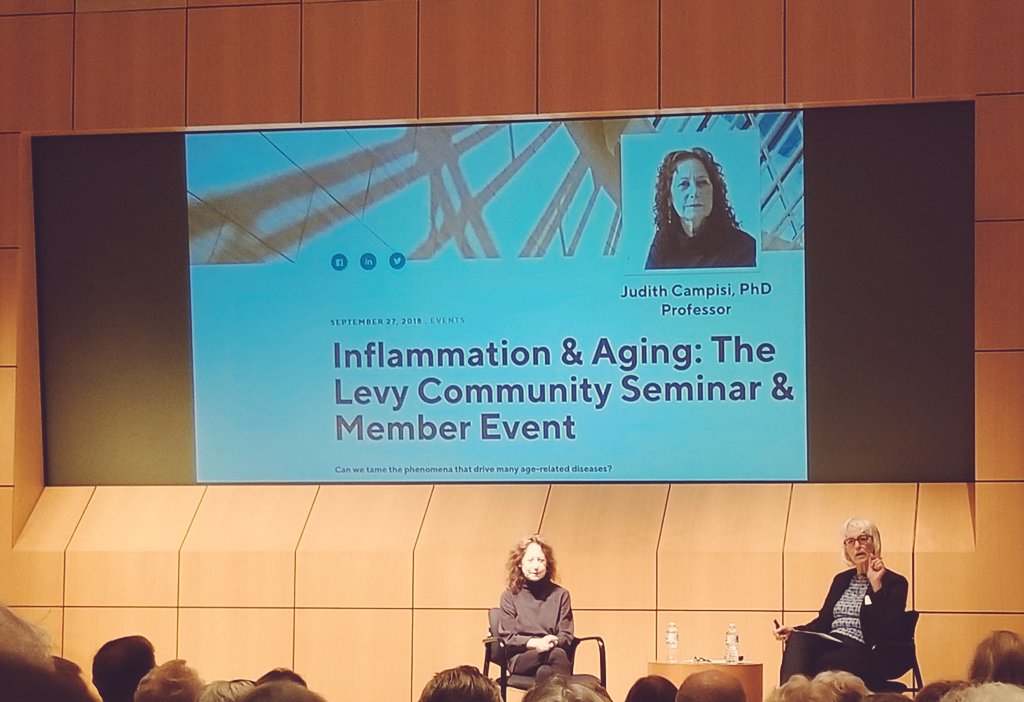UNITY Biotechnology made a big splash a few weeks ago to announce their venture funding and intent to develop a senescent cell clearance technology to treat age-related disease by removing one of its causes. The press linked the company to researchers involved in proof of concept work in mice that has been ongoing since 2011, using a clever system of genetic engineering to eliminate senescent cells first in an accelerated aging mouse lineage and then in mice that age normally. This culminated in a life span study showing 25% life extension in mice through this methodology, which clearly sets the stage for much greater interest in this approach to the treatment of aging as a medical condition. This is good news all round, since Strategies for Engineered Negligible Senescence (SENS) advocates and researchers have been calling for progress towards senescent cell clearance for more than a decade, and now the rest of the research community is finally catching up.
UNITY Biotechnology didn't emerge from nothing, and isn't just an outgrowth of the particular research group noted in the press material. It is more a union between that group, Buck Institute researchers who have been working on the same challenge, and a preexisting commercial venture with its own potential technology for senescent cell clearance. This makes sense, as the genetic engineering approach used in mice as a proof of concept would essentially have to be ripped up and rebuilt from scratch in order to be useful in humans. That is a poor alternative if there is some other approach to build on instead. As I pointed out last year, if you go digging there is a lot of dark matter out there from the past ten years when it comes to efforts to clear senescent cells. There are patents on a variety of approaches, and a number of dead, quiet, or dormant small companies that clearly never got to the point at which they could convince the venture community to fund their work.
One of these companies is Cenexys, started by the same successful entrepreneur who is at the helm of UNITY Biotechnology. There are relationships there with established biotechnology company Kythera Biopharmceuticals, and with the Buck Institute group run by Judith Campisi where a lot of senescent cell work has taken place in recent years. Cenexys was probably just a holding company for the senescent cell clearance intellectual property: if you take a look at relevant patent registrations, you'll find the following patents, and note that they are now assigned to UNITY Biotechnology.
Use of engineered viruses to specifically kill senescent cells (2013)
Polypeptides, viruses, methods and compositions provided herein are useful for the selective elimination of senescent cells. Method aspects include methods for inducing apoptosis in a senescent cell comprising administering to the cell a polynucleotide, virus, host cell, or pharmaceutical composition described herein. Other methods include expressing a pro-apoptotic gene in a senescent cell comprising administering to the cell the polynucleotide, virus, or pharmaceutical composition as described herein.
Immunogenic compositions for inducing an immune response for elimination of senescent cells (2013)
Provided herein are immunogenic compositions (vaccines) and methods for immunizing a subject with the immunogenic compositions for inducing an adaptive immune response directed specifically against senescent cells for treatment and prophylaxis of age-related diseases and disorders, and other diseases and disorders associated with or exacerbated by the presence of senescent cells. The immunogenic compositions provided herein comprise at least one or more senescent cell-associated antigens, polynucleotides encoding senescent cell-associated antigens, and recombinant expression vectors comprising the polynucleotides for use in administering to a subject in need thereof.
Disclosed are agents (e.g., peptides, polypeptides, proteins, small molecules, antibodies, and antibody fragments that target senescent cells) and methods of their use for imaging senescent cells in vivo and for treating or preventing cancer, age-related disease, tobacco-related disease, or other diseases and disorders related to or caused by cellular senescence in a mammal. The methods include administering one or more of the agents of the invention to a mammal, e.g., a human. The agents, which specifically bind to senescent cells, can be labeled with a radioactive label or a therapeutic label, e.g., a cytotoxic agent.
UNITY Biotechnology is the brand under which the final assembly of technology, money, and will for this line of research came together, after some years of groundwork, which clearly involved filing (arguably overly) broad patents on anything that looked promising. At any point in time over the past five years someone could have funded a senescent cell clearance approach and started good work on making it real. Things are always late, however, coming together well past the point at which they are obvious to many in the industry, especially when you have to convince outsiders to give you venture funding. This is why it is very rare for any company to emerge alone, and UNITY Biotechnology is only one of a number of efforts. There are competitors I know about, such as Oisin Biotechnology whose founders have assembled an impressive gene therapy approach, and no doubt competitors I don't know about because they are either quiet groups internal to Big Pharma entities, or scientists elsewhere in the world with nascent senescent cell clearance technology and the connections to launch a company sometime in the next year or two.
The breadth of these patents unfortunately doesn't give much of an indication as to what exactly the UNITY Biotechnology staff is working on for their first attempt at a senescent cell clearance technology, other than to suggest that they are indeed doing nothing with the genetic engineering proof of concept used in the mouse life span studies. Tagging senescent cells and then sending engineered immune cells to destroy them wouldn't be a terrible guess, however. Immunotherapy is certainly a very viable approach to targeted cell destruction; a lot of time and effort goes toward this sort of immunotherapy in the cancer research community, for example.
View the full article at FightAging






















































